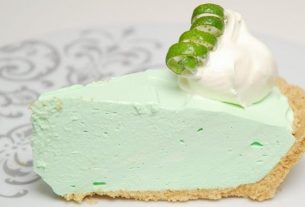At times, you could forget to return your frozen fruits into your freezer after using some to prepare a smoothie. There may also be a kind of power outage that could result in thawing your frozen fruits. You are likely to have noticed on the package that you should not refreeze it once completely thawed.
The question is whether or not frozen fruit can be refrozen. You could refreeze your frozen fruit, however, you have to know the quality control and safety involved.
Guidelines for Refreezing Frozen Fruit
You need to be concerned with two major things when you want to refreeze frozen foods and they are quality and safety. You can refreeze your frozen fruit, however, you will be risking your health as well as meal enjoyment if you do it. Contained in all food is water and you will find over average in fruits. This is why most frozen foods become soft and mushy when they thaw because the strength would have been compromised.
The ice crystals also melt when they thaw and this will allow much moisture, leaving the food soggy. If you put already thawed fruit back into your freezer, it is an avenue for more ice crystals and you will end up with worse results.
Safety Concerns of Refreezing Fruit and Other Foods
It is not dangerous to refreeze your frozen fruits but it is about the degradation and contamination that is associated with the food after it has been defrosted. Mold or bacteria do not get killed from freezing. If you freeze the food after contaminants have moved into it, they will multiply when you thaw the second time.
Bacteria eat protein, it means fruits are safer than protein products. Mold eats carbohydrates, most especially simple sugars that are made up in fruits. You are likely not to become seriously ill from the mold but it will not give you something tasty which may have consequences.
There are two options if you have to refreeze already thawed fruit that was previously frozen. It is either you refreeze it very quickly before mold or bacteria begin their invasion or you first cook it. When you cook the food, it will become new, it means when you now freeze it, you are just freezing it new. You should ensure you allow it to cool completely at room temperature before freezing it. Freezing hot or warm food is a bad idea because it will lead to the growth of mold and bacteria.
Your fruit can be refrozen if you had defrosted it inside the fridge and not on the counter or place that has a temperature that is higher than 40°F. Ensure that the refreezing process is done within 2 to 3 days and you should use a very good freezer bag (double sealed) or an airtight container of high quality.
Quality Concerns of Refreezing Fruit and Other Foods
As previously said, fruits contain a high content of water and you will most likely not get the crunch texture as when they are still fresh. Fruit usually gets mushy after frozen and that is why it is an ideal item for baking, soups, used in pureeing, and used in smoothies. The elasticity and the strength will become further compromised when you refreeze it. This is not an issue if you want to use it in cooking. There will certainly be a change in the nutrition and flavor when you refreeze your fruit.
Refreezing Fruit Juice
Consider fruit juice to be a little different from an entire fruit. Concentrates of juice could be a bit more had to dissolve perfectly with water, however, you can safely consume them as long as you thaw them inside the refrigerator below a temperature of 40°F. The process of fermentation is quicker for fruit juice due to the high content of sugar.
You need to ensure it is refrozen very quickly when it is still very fresh. It is also not advisable to allow it to be on a countertop, at a warm temperature. If you detect sliminess, odd smells, or color, just throw away the juice.
How To Freeze Fruit So You Don’t Have to Refreeze It
There is a way you can manage and stop your whole batch of fruit from becoming mushy, the thing to do is to freeze it so that you can easily thaw only the ones you need at a time. The idea is to freeze individual pieces separately before they are dumped with other pieces. Each piece will remain individual and you can remove just the portion you need instead of thawing the whole batch.
Also, freezing individually will allow for each getting frozen faster than how they will freeze collectively. The faster the fruit gets frozen, the smaller the possibility of ice crystals that will be formed and it will make it better for the fruit to remain intact after you have thawed.
Freeze Fast
The formation of ice crystal will be smaller the faster the fruit is frozen and the quality will be better when it is thawed. When you freeze individually, fruit freezes faster but you need to ensure that you have enough room for the circulation of air inside the freezer so that it will increase how fast it freezes.
Prepare and freeze a tray per time in case you have fruit more than can fit into your single tray. Individual pieces of fruit will become frozen between 20 and 30 minutes. You can then proceed to move them into your freezer-friendly container or Ziploc bag. Tightly pack your fruit if you are using a Ziploc bag for excess air to be removed. Also tightly pack the fruit if you are using a glass or Tupperware container so that there won’t be room for excess air. Ensure an inch of headspace at the container’s top.
Dry Packing Fruit
This will allow the fruit to become frozen individually instead of getting them frozen together. You may decide to freeze the fruit sweetened or unsweetened but you can prevent color and texture changes when you add sugar. Use a tablespoon of ascorbic-citrus per four cups of the fruit if sugar will not be used.
If you will add sugar, add it to the ascorbic-citrus and allow the fruit to stand for about 10 minutes so that the sugar will soak in. Your choice determines the quantity of sugar to use and also how naturally sour or sweet your fruit is.
Use the sugar and acid to toss the fruit and spread it out evenly on your cookie tray or baking sheet that you have used parchment paper to line so that they will not touch one another.
Use Ascorbic-Citric Acid
Go to the section “canning” in a supermarket and get ascorbic-citrus that helps you to preserve the fruit’s integrity once you cut it. It will not allow the fruit to ripe further and serve as a protection from oxidation (makes apple brown), it will also keep the nutrients and vitamins intact.
As Fresh as Possible
You need to freeze your fruit as fresh as possible to get the best result. If you have your grown fruit, all you need to do is to pick it up when it is ripe, cut into pieces and proceed to freeze it. In case you do not grow fruit, purchase from local markets, or grocery stores.
However, the problem is that you are likely not to get a fresh one from buying those that are shipped because they are picked before they are yet to fully ripe and they are shipped and possibly stored for some days. When you get it, it is likely to be a week already and most of the value contained in the nutrition would already have been lost.

How To Thaw Frozen Fruit
Ensure you thaw your fruit in a refrigerator if you know you are likely to refreeze it after defrosting it. The thawing temperature should be below 40°F. The fruit should remain cold so that mold and bacteria will not form on it and then you can safely refreeze. You should still allow it to defrost slowly in the refrigerator even if you are not refreezing it.
It is the safest method to use though it is the slowest. Put the frozen container or bag of fruit in a larger container or on a plate in the refrigerator for any juice or water to drip inside when the process of thawing is ongoing.
In case you are rushing and you want to thaw the fruit hurriedly, soak the frozen fruit inside cold water. It is likewise safe but you might not guarantee that it will be below 40°F. This method is quite faster too. Ensure the fruit is contained safely in the waterproof container or bag and allow it to submerge into cold water.
Monitor and check every 30 minutes and drain the water before you add fresh cold water for the continuation of the process. Once you have defrosted it enough to use, use the ones you want and put the remaining inside the refrigerator.
It is also possible to defrost your fruit in a microwave but you are not allowed to refreeze it unless you bake or cook it first. The microwave method is not reliable to thaw the fruit. You need to ensure it only stays for a 1-minute interval or even fewer and then stir it to distribute all the heat. Continue this way until fully done.


